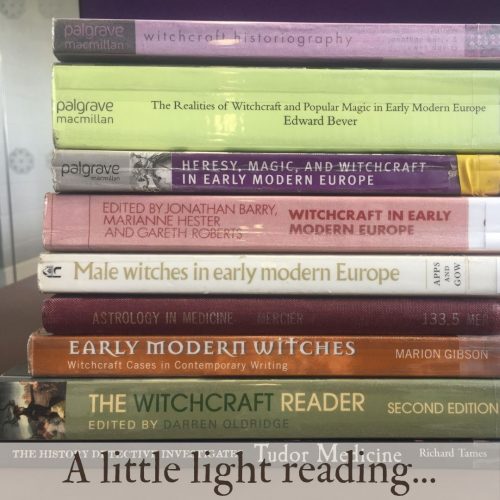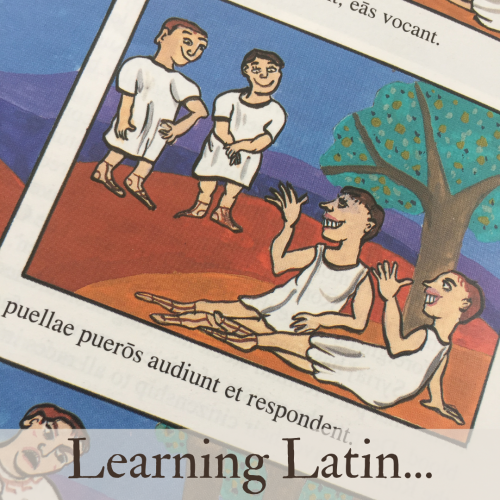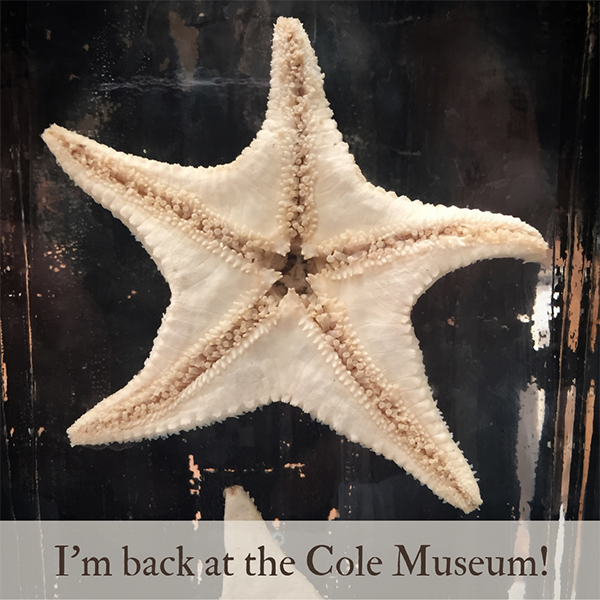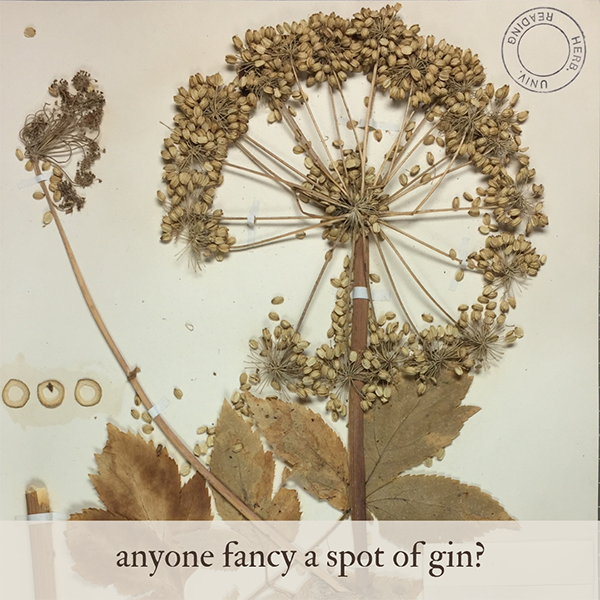I’m going to let you into a @ColeZoology secret. This highly sophisticated Orange Bucket System is how we safely transport smaller specimens from their off-site storage space into the lab. 1/7 pic.twitter.com/pqBfg0iVyB
— Claire Smith (@wetconservatrix) August 15, 2019
Category: University
Cleaning up a Lesser Spotted Dogfish
A little light reading…

Last week I unexpectedly had a free morning to spend at the Library, so I spent it getting acquainted with the subject of witchcraft in Early Modern Europe. I’m still reading around the edges of early printed herbals and medicine, particularly in the area of lay medicine. I’m interested in how, and by whom, medicine was practiced by communities who didn’t necessarily have easy access to doctors.
I was thinking about rural and community medicine, and in particular the archetype of the “wise woman” who people might go to in times of need, expecting a remedy of some kind. One of the difficulties with looking into rural communities in the early modern period is that literacy was not widespread, so as a result there’s very little first hand information written down. I wondered whether I might find anything lurking in the documentation to do with witchcraft, but as it turned out, the answer was no… or at least not in the way that I’d expected.
According to Barbara Rosen:
… a closer look into ecclesiastical records and into the background of pamphlet and instructional literature suggests that a much larger number of English witches were “good witches” never brought to trial by neighbours, who regarded them as an asset to the community.
Witchcraft in England 1558-1618, (1969) preface to the paperback edition (1991), pp viii & x
Few poor people visited doctors and they were cynical about the clergy, but they did visit witches, wise women, or cunning men in circumstances where healer, client, and suspected bad witch were all part of the same society and equally aware of its hidden dynamics.
This view was also supported by Jane P. Davidson in her essay “The Myth of the Persecuted Female Healer” (1995)
…the historical evidence shows that female healers, with the exception of midwives, were rarely those denounced as witches. While the belief that midwives were witches was widespread, evidence indicates that even the number of practicing midwives that were tried and condemned is not particularly large.
The Witchcraft Reader, Second Edition, ed. Darren Oldridge, 2008. Chapter 26 (p 258)
…only a small number of European witches were specifically described as healers.
Davidson also quotes Doreen G. Nagy’s Popular Medicine in Seventeenth Century England, which I have yet to read:
Since most medical historians of the early modern period have written from the perspective of professional medicine, they have either completely ignored the role of ordinary women in the provision of medical services, or dismissed them with patronizing terms such as wise women, white witches, or simply old women… in fact women played a central role in Stuart health care.
Popular Medicine in Seventeenth Century England, Doreen G. Nagy, 1988
So, it looks as though my next step is to read that book… and also to have a look for some more recent research in this particular area. As soon as I collect my Postgraduate library card (at the end of next month), I can start looking at some of the online journals and ebooks which I don’t have access to at the moment.
I’m also looking at the history of botany, and all manner of folklore to do with plants. In fact my reading list is starting to get a little bit out of hand! I really need to start making a spreadsheet of what I’ve read, and some notes about which particular areas I’d like to focus on next. Otherwise I could easily keep reading aimlessly around the subject forever.

I’m intending to focus primarily on books written in English, but I thought it might be sensible to have a bit of a refresher course in Latin, just in case. I’ve gone right back to the beginning with the Oxford Latin Course, having discovered that I could remember precisely nothing of the Latin that I’d learned in my first year as an undergraduate, way back in the mists of 1993. So far the translations are going pretty well… but oh! The grammar!
I went to high school during a period when we weren’t really taught English grammar, never mind Latin, so there’s a huge chunk of stuff (particularly regarding cases and how to make them agree with one another) that I simply don’t know. I’m getting there – but very slowly!
Golden Mole!
A spot of tlc for a woodpecker
Chameleon and her eggs
Things In Jars!
Preparing for display
Spirit Collections Care
What I do when I’m not sewing…

You might have noticed that I’ve been doing an awful lot less sewing than I used to. That’s because I’ve been preparing to go back to University in September to start an MA in History. To get the fibromyalgia used to the idea of actually Leaving The House And Doing Things, I’ve been doing some volunteering with the University’s museums and collections.
I’ve been away from the Cole Museum of Zoology for about four years. Firstly I took a job which clashed with the time allocated for volunteering, and secondly that job ended up making me so ridiculously ill that it’s taken me almost two years to recover from it. But! I recently made it back to the museum, and to be quite honest, sitting down with a bench full of spirit specimens in front of me just felt like home. I’d really missed it, and it’s so good to be back.

I’ve been volunteering at the Herbarium since last October. I’ve mostly been working on one project, the Cyclamen Society collection, helping to prepare it to be added to the University’s cataloguing system.
Occasionally I get to do other things too. Last week I had a lovely time looking through the collection for very specific specimens, all relating to gin! July 8th was World Gin Day, and Alastair and I wrote a blog post all about botanicals.
I also wrote a Twitter thread about some interesting coriander specimens – something I also got to do for Museums Week. The theme of the day was “rainbow”, so I wrote about colour retention in the cyclamen specimens, historical hair colours (don’t do it, folks!), and plant-based textile dyes.

I’ve also been taking full advantage of the University’s Special Collections, and getting a bit of a head start on my MA dissertation research. I recently requested two agricultural books, printed in 1585 and 1614. One of them was in absolutely immaculate condition… and the other one was very clearly a well-used working book!
I’ve written a post about them on my second Patreon blog, Mrs Magpie Writes. (My first Patreon is for Miss Mouse.) My next task is actually to re-write pretty much all of the information about that Patreon project, as I set it up before I decided to go back to University, and I’m no longer doing, well, any of the things it says I’m going to do. Oops.
So, this is a bit of a heads up to say that I’m going to be blogging about all sorts of different things from now on! There’ll be a bit of history, a bit of museums, and I might occasionally still manage to sneak the odd little bit of sewing in from time to time.
